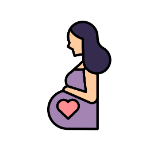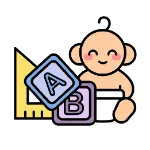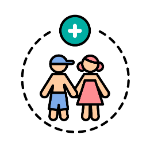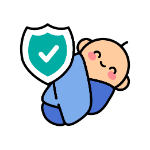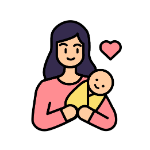
Childcare
Potty Training 101: Preparing For Success
6 min | Updated on 20-07-2023 by HappyPreggie
(Image credits to Fast Voice Media)
Are you ready to start potty training your little one? Potty training means teaching your child to use the toilet by themselves for pee and poop. It's a big step for their growth and development, as they stop using diapers and learn to go on their own. Potty training can be a bit challenging, but with the right tips and strategies, you can make it easier and more successful.
The goal of potty training is to help your child learn how to control their bathroom needs and do things on their own. Most kids start potty training between 2 and 3 years old, but some may start earlier or later. In this blog, we'll give you simple and helpful advice to make potty training easier. We'll cover everything from knowing when your child is ready to dealing with common problems. Get ready to say goodbye to diapers and help your child become a big kid!
Why Is Potty Training Important?
There are many reasons potty training is important, and most importantly it helps children develop a sense of independence and autonomy over their bodily functions, thus allowing them to take an active role in managing their own hygiene and personal care. Not only that, a successful potty training can give them a sense of accomplishment and boost their self-confidence as they feel more competent and capable. Potty training also promotes good hygiene practices like proper handwashing, and reduces the risk of discomforts related with prolonged use of diapers. Other importance of potty training includes:
- Essential for enrollment in preschool or daycare as it allows children to actively engage in educational and social activities without the need for diapers.
- Saves money by eliminating ongoing diaper expenses and reduces the time and effort spent on diaper changes.
- Enhances family and social interactions, providing convenience and ease during outings, playdates, and family events. Children can participate in activities without frequent diaper changes or disruptions.
- Major developmental milestones for children, marking their progress in physical, cognitive, and emotional growth. It signifies increased independence and self-sufficiency as they navigate this important transition.
Signs Your Baby Is Ready To Potty Train
- Showing Interest
- Increased Awareness
- Longer Dry Periods
- Communication Skill
- Physical Readiness
- Predictable Patterns
- Discomfort with Dirty Diapers
What You Need To Start Potty Training
(Image credits to Sweet Cherry)
#1 Potty Chair or Toilet Seat InsertConsider size, stability, and ease of cleaning when choosing between a standalone potty chair or a toilet seat insert for your child's potty training needs.
(Image credits to Babybjorn)
#2 Step StoolA step stool helps your child reach the toilet or potty independently, promoting independence and safety.
(Image credits to ecobb)
#3 Training Pants or UnderwearTransition your child from diapers to training pants or underwear to feel wetness and recognize their body's signals.
#4 Extra Clothing
Have a supply of extra clothing, including pants, underwear, and socks, readily available for accidents during the learning process.
#5 Rewards and Motivators
Consider using a reward system to motivate and reinforce positive behaviour. This can include stickers, small treats, or a chart to track progress.
#6 Books or Videos
Collect potty training resources to help familiarise your child with the process and generate enthusiasm.
Techniques and Strategies to Potty Train
1. Introduce the potty chair or toilet seat insert to your child in their designated potty area. Encourage them to sit on it fully clothed at first, allowing them to feel comfortable and confident.
2. Create a consistent potty training routine by scheduling regular trips to the potty after meals, upon waking up, or at specific intervals throughout the day to help your child understand when it's time to use the potty.
3. Praise and reward your child for their potty training achievements. Use verbal encouragement, high-fives, treats, or a reward chart with stickers or stars for each successful trip to the potty.
4. Demonstrate the process yourself and use simple and age-appropriate language to explain what they should do and why it's important to use the potty.
5. Encourage your child's participation in the potty routine, teaching them to manage their pants, wash (with supervision), and eventually flush. Gradually encourage them to do more independently as their skills develop.
6. Potty training can be challenging at times, but staying calm, patient, and positive is crucial. Avoid punishments or shaming for accidents to prevent negative associations with the potty.
7. Each child progresses at their own pace in potty training. Show patience, offer support, and understand that some children may take longer to grasp this new skill.
How Boys and Girls Differ in Potty Training
When it comes to using a potty trainer, there are a few differences to consider between baby boys and girls:
i. Anatomy: Boys and girls have different genitalia, which can affect how they use the potty. Boys need to sit down to pee, while girls can do so as well, but they may also find it natural to sit with their legs spread apart.
ii. Standing vs. Sitting: As boys grow older, some may feel more comfortable standing to pee. This can be a transition point during potty training when they move from sitting to standing. Girls typically continue to sit throughout their potty training.
iii. Aiming: Boys need to learn how to aim their urine into the potty, which can take some practice. Parents may need to provide guidance and encouragement during this learning process.
iv. Bladder Control: Girls may achieve bladder control earlier than boys, but every child is unique. Don't worry if your child takes time to learn potty training; be patient and supportive. They'll get there when they're ready.
v. Communication Styles: Girls are often thought to develop language skills earlier than boys, which may lead to better communication about their potty needs. Boys may take a little longer to express their needs verbally.
vi. Personality and Temperament: Each child has their own personality and temperament, which can influence their potty training experience. Some boys or girls may be more independent and eager to use the potty, while others may be more resistant or shy.
Common Challenges You May Encounter When Potty Training
(Image credits to Today’s Parent)
- What do I do if my child refuses to potty train?
- Why did my child show regression in their progress?
- What else can I do to help my child?
This milestone is filled with exciting moments and occasional hiccups, but remember to stay positive and friendly throughout the process. Embrace every small achievement and don't let setbacks bring you down. Keep communicating, provide consistent support, and trust in your child's abilities. With the tips and strategies shared in this blog, you are equipped with valuable knowledge to navigate the challenges and guide your child towards potty training success. Good luck on this exciting potty training adventure!
Join the largest support network for family health and well-being. Ready to get started?
Get started
